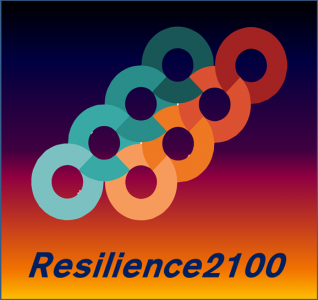
Misdiagnosing the context for decision-making is when smart people can make stupid mistakes. A key distinction that needs extra focus is the difference between complicated and complex.
I am grateful to the authors Snowden and Boone for their article A Leaders Framework for Decision-Making emphasizing the differences between complicated and complex. They say something is complicated if it is like a Ferrari. It takes an advanced level of expert knowledge to understand how it fits together. Spread every single part of the Ferrari on the floor of a warehouse and then ask a Ferrari mechanic to come in and put it all back together. Once she’s done, you’ve got a fully functioning Ferrari! It’s an amazing machine and it sure is complicated.

Imagine, now, that you are spreading all the parts of a Brazilian rainforest on the floor of the warehouse. Who do you call to put it back together? Just reassembling the parts doesn’t make it leap back to life. There is no expert that can put those parts back together again into a functioning rainforest because it is more than the sum of its parts. It is self-organizing. It has multiple pathways forward and it shifts and adapts to changing conditions over time.
How can you tell when you are in a time of complexity? When there is more than one right answer and more than one wrong answer and no way to tell which is which until the future unfolds.
This is the situation we are in now with climate change and technological change. The uncertainty of how the climate will adapt to increased thermal energy and increased water vapor in the atmosphere is somewhat predictable at the planetary scale where we have a more or less closed system, but the complexity and uncertainty at the regional scale makes local predictions highly unreliable. Yes, we can run scenarios and clusters of scenarios can give us insight. But they are too uncertain for typical decision-making processes.
Despite this complexity, we still spend billions of dollars each year designing, building, and regulating our urban form and infrastructure as if future conditions are merely complicated. When we ask designers to make a road culvert that can accommodate climate change, the designers rightfully say, “Tell me how much flow is going to go through and I’ll design a culvert to accommodate it.” That’s because our designers are experts in complicated issues. Yet the issue they are facing is not complicated, it is complex. There is more than one right answer and more than one wrong answer and no way to predict until the future unfolds. The answer is unknowable. Which can make it difficult to design a culvert that will last. If it’s unknowable, then how big does the damn thing need to be???
Increasingly the acceleration of technological change is similar. We know that change is rapid and we can predict that the change is going to start happening faster than we can adapt to it. We won’t have adapted to that last version of innovation when the next version will already be introduced.
It’s time to realize that we are all making decisions in a complex world. It’s time to recognize that when things are complex we can’t know how well our decisions are going to play out in an uncertain future. Will the levee be high enough? Will the heating and cooling systems be sized correctly for future conditions? Will the technology change before I learn how to apply it?
When we admit that we are in a time of complexity then we realize that we are better off looking for incremental solutions, close monitoring of changing conditions, designing in flexibility and adaptability into everything. And knowing that whatever we design will have it’s design thresholds exceeded at some point in the near or distant future. And the most humane and cost-effective way to address that is to also select the options that help to speed along recovery after that event.
Understanding how to make decisions in a time of complexity requires a different suite of skills. In a time of complexity we need to launch multiple small experiments and pilot projects that begin to test solutions before we know if we’ll need them.
It’s not complicated anymore. It’s complex.
